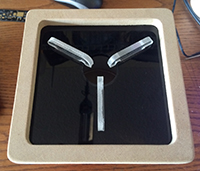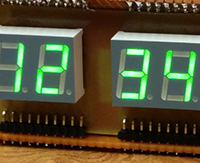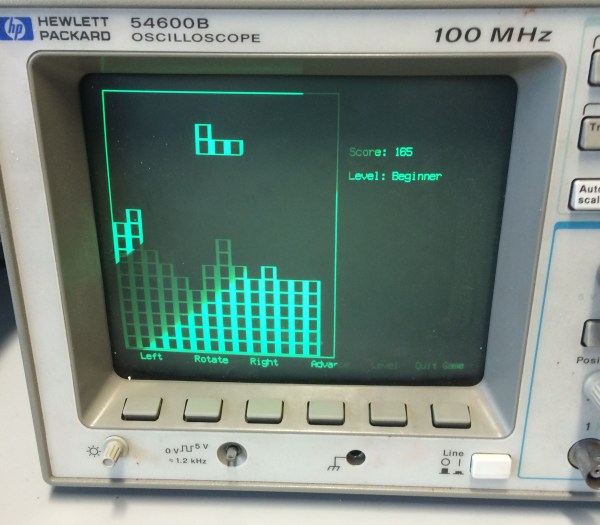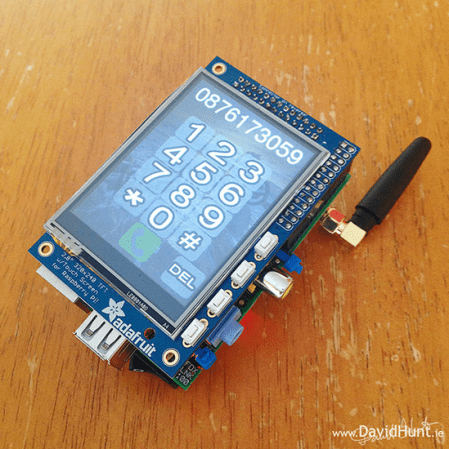Notwithstanding [John Titor] and his time travelling ’67 Corvette convertible, the coolest time machine on wheels has to be the DeLorean from Back to the Future. BTTF is apparently a very popular theme for our sci-fi contest, with a lot of great entries.
You mean to tell me you made a time machine? Out of a Hyundai Accent?
 After a careful bit of research, it appears the Hyundai Accent (GLS) has both a higher top speed and faster 0-60 time than a DeLorean, and that’s before the installation of time circuits, a flux capacitor, and plutonium reactor. [docbrownjr] and [Jennifer] decided their Accent was the perfect vehicle for a time machine conversion and decided to add a Mr. Fusion to the mix.
After a careful bit of research, it appears the Hyundai Accent (GLS) has both a higher top speed and faster 0-60 time than a DeLorean, and that’s before the installation of time circuits, a flux capacitor, and plutonium reactor. [docbrownjr] and [Jennifer] decided their Accent was the perfect vehicle for a time machine conversion and decided to add a Mr. Fusion to the mix.
Like the on-screen version, this version of a Mr. Fusion is made from a kitchen appliance. With the original Krups coffee grinder out of production, the team settled on an iced tea machine. There will, however, be copious amounts of dry ice involved, as will half-empty beer cans and banana peels.
WiFi-enabled Flux Capacitor
 After knocking his head on a toilet, [Beamsjr] came up with a great idea – a networked flux capacitor, able to display the Teamcity build progress.
After knocking his head on a toilet, [Beamsjr] came up with a great idea – a networked flux capacitor, able to display the Teamcity build progress.
This build is going all out with custom PCBs – one for the controller board, and three for the shift registered LEDs underneath the acrylic knobbies in the flux capacitor. WiFi is provided by the TI CC3000 module, with the main microcontroller being an ATmega 328p,
Time circuits on
 Honestly, we’d be a bit disappointed if this contest didn’t have a BTTF time circuit build entry. Luckily for us, [atheros] and [bwa] are on top of things with their time circuit clock, complete with an alarm and FM radio receiver (FM isn’t going to work in 1955, guys).
Honestly, we’d be a bit disappointed if this contest didn’t have a BTTF time circuit build entry. Luckily for us, [atheros] and [bwa] are on top of things with their time circuit clock, complete with an alarm and FM radio receiver (FM isn’t going to work in 1955, guys).
Unlike a few other time circuit builds we’ve seen over the years, the guys are doing this one up right, with 14-segment LEDs for the month display. They’re etching their own boards for this one, and it’s looking like it’ll be a very cool project when it’s complete.




 Have you ever dreamed of independence from smartphone bloatware? If you have a Raspberry Pi and an Adafruit TFT, you’re halfway to making your own version of
Have you ever dreamed of independence from smartphone bloatware? If you have a Raspberry Pi and an Adafruit TFT, you’re halfway to making your own version of 
 hile Arduino and its libraries are the quickest way to interface with a sensor and blink an LED, sometimes you shouldn’t have to write and compile code to do something exceptionally simple. [Oliver] realized most of the overly simple functions of a microcontroller could be done from a command line running on that microcontroller and
hile Arduino and its libraries are the quickest way to interface with a sensor and blink an LED, sometimes you shouldn’t have to write and compile code to do something exceptionally simple. [Oliver] realized most of the overly simple functions of a microcontroller could be done from a command line running on that microcontroller and  After a careful bit of research, it appears the Hyundai Accent (GLS) has both a higher top speed and faster 0-60 time than a DeLorean, and that’s before the installation of time circuits, a flux capacitor, and plutonium reactor. [docbrownjr] and [Jennifer] decided their Accent was the perfect vehicle for a time machine conversion and
After a careful bit of research, it appears the Hyundai Accent (GLS) has both a higher top speed and faster 0-60 time than a DeLorean, and that’s before the installation of time circuits, a flux capacitor, and plutonium reactor. [docbrownjr] and [Jennifer] decided their Accent was the perfect vehicle for a time machine conversion and  After knocking his head on a toilet, [Beamsjr] came up with a great idea –
After knocking his head on a toilet, [Beamsjr] came up with a great idea –  Honestly, we’d be a bit disappointed if this contest didn’t have a BTTF time circuit build entry. Luckily for us, [atheros] and [bwa] are on top of things
Honestly, we’d be a bit disappointed if this contest didn’t have a BTTF time circuit build entry. Luckily for us, [atheros] and [bwa] are on top of things 








